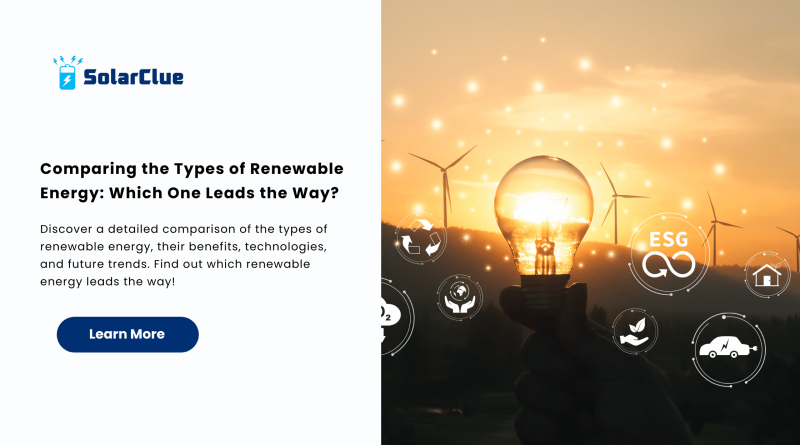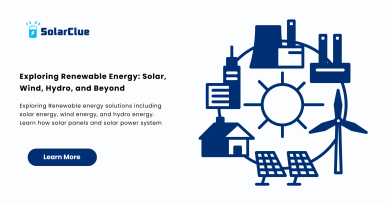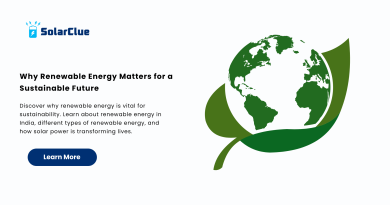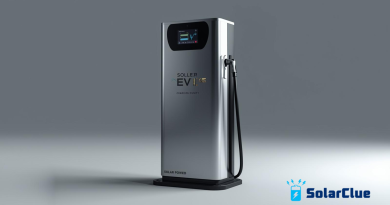Comparing the Types of Renewable Energy: Which One Leads the Way?
Today, as the world shifts towards a greener future, renewable energy is taking center stage. But which renewable energy is best? Understanding the types of renewable energy, their benefits, and technological innovations can guide us to cleaner and more sustainable choices. As interest grows, people are asking more about what is renewable energy and how it impacts daily life. Let’s dive into the world of sustainable energy sources and compare which ones truly lead the way.
Table of Contents
- 1 What is Renewable Energy?
- 2 Types of Renewable Energy
- 3 Renewable Energy Benefits
- 4 Renewable vs Non-Renewable Energy
- 5 Renewable Energy Technologies Shaping the Future
- 6 Best Renewable Energy Source: Which Leads the Way?
- 7 Green Energy Comparison: Solar vs Wind Energy
- 8 Renewable Energy Forecast
- 9 Renewable Energy Market Trends
- 10 Most Efficient Renewable Energy
- 11 Latest in Renewable Energy Innovations
- 12 Clean Energy Options for Homeowners
- 13 Conclusion
- 14 FAQs
What is Renewable Energy?
What is renewable energy? Simply put, it comes from natural sources that replenish themselves faster than they are consumed. Examples include sunlight, wind, and water. Unlike fossil fuels, which deplete over time, renewable energy offers a long-term solution to our power needs. Choosing clean energy options over traditional sources is essential for combating climate change, reducing pollution, and promoting global sustainability.
Types of Renewable Energy
Solar Energy
Solar power is perhaps the most recognized form of renewable energy. It harnesses sunlight using photovoltaic (PV) cells and converts it into electricity. One of the greatest solar energy advantages is its abundance; even cloudy days can produce solar power. Innovations like floating solar farms are part of the latest in renewable energy developments, making solar even more versatile. With advancements in renewable energy technologies, the future of solar looks exceptionally bright.
Wind Energy
Turbines convert wind into electricity by harnessing kinetic energy. One of the main wind energy benefits is its minimal environmental footprint once installed. With wind speeds increasing globally due to climate change, wind power plays a crucial role in renewable energy market trends. Offshore and onshore wind farms offer expansive opportunities for mass electricity generation, contributing heavily to renewable energy innovations.
Hydropower
Hydropower captures the energy of flowing water, often through dams or rivers. It has been a cornerstone of renewable energy technologies for decades, providing a significant portion of renewable electricity worldwide. As part of a broader green energy comparison, hydropower stands out for its efficiency but faces challenges related to ecosystem disruption and relocation issues.
Biomass Energy
Biomass uses organic materials to produce electricity, heat, or biofuels. However, understanding biomass energy pros and cons is important. While it offers a method of recycling waste, the potential for deforestation and emissions concerns must be considered carefully. Still, when managed sustainably, biomass remains a vital component of the renewable energy options available today.
Geothermal Energy
Geothermal taps into the Earth’s internal heat to produce electricity or for direct heating purposes. With minimal land footprint and high reliability, geothermal energy is a robust sustainable energy source. Unlike solar and wind, geothermal is not weather-dependent, making it an attractive option in the renewable energy comparison.
Renewable Energy Benefits

The numerous advantages of renewable energy cannot be overstated. It significantly reduces greenhouse gas emissions, decreases dependence on imported fuels, and offers local economic benefits through job creation. As renewable energy solutions become more accessible, individuals, businesses, and governments can capitalize on these benefits for a healthier planet.
Renewable vs Non-Renewable Energy
When comparing renewable vs non-renewable energy, the difference in environmental impact is stark. Fossil fuels contribute heavily to air pollution and climate change, whereas renewable energy sources are clean and abundant. Additionally, the volatility of fossil fuel markets contrasts sharply with the predictable nature of sustainable energy sources.
Renewable Energy Technologies Shaping the Future
From advanced solar cells with higher efficiency rates to wind turbines with smart sensors, renewable energy innovations are reshaping the industry. Battery storage improvements now allow solar and wind energy to be used even when the sun isn’t shining or the wind isn’t blowing. Furthermore, the integration of AI in managing energy grids marks a significant leap forward for the future of renewable energy.
Best Renewable Energy Source: Which Leads the Way?
Choosing the best renewable energy source depends heavily on local conditions. Solar energy excels in sunny climates, while wind power thrives in coastal and open plain areas. Geothermal energy is perfect for tectonically active regions. Hydropower remains dominant where large rivers are available. A comprehensive renewable energy analysis often reveals that a hybrid approach, combining multiple sources, is the most efficient.
Green Energy Comparison: Solar vs Wind Energy
In the ongoing debate of solar vs wind energy, each has distinct advantages. Solar is easily scalable and ideal for residential installations, while wind energy is more efficient on a larger, commercial scale. Evaluating site-specific conditions is key to determining which technology is most viable for a particular project, solidifying the importance of a thorough green energy comparison.
Renewable Energy Forecast
The renewable energy forecast predicts that by 2050, renewable sources will supply nearly half of global electricity. This growth is fueled by falling costs, technological advancements, and urgent climate policies worldwide. The push for electrification across industries further boosts the relevance of renewable energy in the global energy mix.
Renewable Energy Market Trends
Current renewable energy market trends show a surge in investments, with governments incentivizing clean energy projects. Community-owned energy systems, decentralized grids, and enhanced storage capabilities are reshaping how energy is produced and consumed. According to renewable energy overview studies, public demand for cleaner energy is at an all-time high.
Most Efficient Renewable Energy
Among most efficient renewable energy sources, hydropower leads in conversion rates, turning 90% of available energy into electricity. However, advancements in solar panel technology and offshore wind capacity are narrowing the gap significantly, ensuring that no single source monopolizes the efficiency race.
Latest in Renewable Energy Innovations
The latest in renewable energy includes breakthroughs like transparent solar panels, airborne wind turbines, and ocean wave energy converters. Companies are constantly pushing the envelope to improve energy capture methods, making renewable energy innovations one of the most exciting fields today.
Clean Energy Options for Homeowners
Homeowners now have unprecedented access to clean energy options. Whether through rooftop solar panels, community wind projects, or geothermal heating systems, the ability to contribute to a greener planet is easier than ever. Those curious to explore more can visit SolarClue for innovative products tailored to residential needs.
Conclusion
In conclusion, comparing the types of renewable energy shows that no single source reigns supreme universally. Solar, wind, hydro, biomass, and geothermal each offer unique advantages and face distinct challenges. A diversified energy portfolio combining these technologies is crucial for achieving true sustainability. To explore more renewable energy solutions and stay updated with the latest trends, check out Blog.SolarClue — your journey towards a cleaner, brighter future starts now!
FAQs
Which of the following is a renewable source of energy?
Solar energy, wind energy, hydropower, biomass, and geothermal are all renewable sources.
What are the advantages of renewable energy?
They include reduced emissions, energy security, job creation, and long-term sustainability.
Which renewable energy is best for urban areas?
Solar energy is often the most practical due to space limitations and easy installation.
How does renewable energy benefit future generations?
It ensures a cleaner environment, stable energy prices, and healthier living conditions.
What are some of the latest innovations in renewable energy?
Floating solar farms, smart wind turbines, and enhanced geothermal systems are among the latest technologies.




